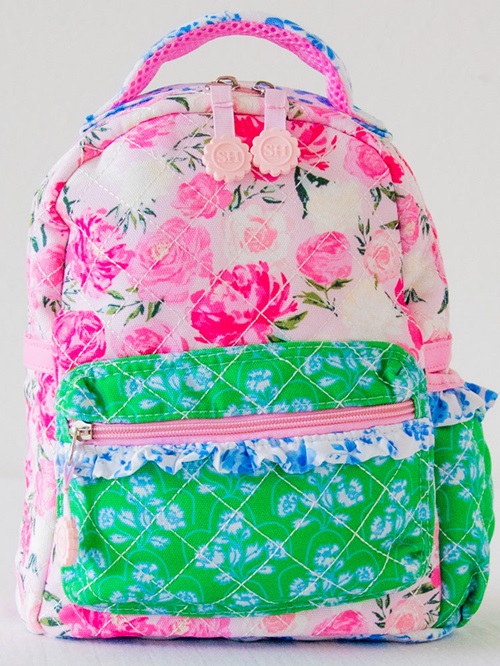Last Updated on January 1, 2025
Choosing the perfect backpack for your child can be daunting as a parent. With so many options available, it’s easy to get overwhelmed. However, selecting the right backpack is crucial for your child’s health, comfort, and overall school experience. This guide will help you navigate the process and make an informed decision.
Importance of Choosing the Right Backpack
Health Considerations
An ill-fitting or poorly designed backpack can lead to a range of health issues for your child, including back pain, poor posture, and even long-term musculoskeletal problems. Ensuring that your child’s backpack fits properly and is designed to distribute weight evenly can prevent these issues.
Practical Benefits
A well-chosen backpack can enhance your child’s school experience by helping them stay organized and making it easier to carry their belongings. Multiple compartments, durable materials, and ergonomic designs contribute to a more efficient and enjoyable school day.
Factors to Consider When Choosing a Backpack
Size and Fit
Choosing a kids backpack that is appropriately sized for your child is essential. The backpack should not be wider or longer than your child’s torso and should sit approximately two inches below the shoulder blades. To measure for the right fit, measure your child’s torso length from the base of the neck to the top of the hip bones.

Weight
A child’s backpack should not weigh more than 10-15% of their body weight when fully loaded. To manage and distribute weight properly, look for backpacks with padded shoulder straps and a padded back panel. This helps to reduce strain on the shoulders and back.
Compartments and Pockets
Multiple compartments and pockets are beneficial for keeping items organized. Look for backpacks with specific features like pencil holders, laptop sleeves, and water bottle pockets. This ensures that your child can easily find what they need and keeps the weight balanced.
Material and Durability
The material of the backpack plays a significant role in its longevity and ease of cleaning. Durable materials like nylon or polyester are ideal. Additionally, consider backpacks that are waterproof or water-resistant to protect the contents from rain and spills.
Comfort and Support
Comfort features like padded shoulder straps, back panels, and waist belts are essential for reducing strain and ensuring your child can carry their backpack comfortably. Adjustable straps are also important to ensure the backpack fits properly as your child grows.
Safety Features
Safety features such as reflective materials enhance visibility, especially for children who walk or bike to school. Additionally, sturdy zippers and secure closures prevent items from falling out and getting lost.
Style and Personalization
Trend vs. Functionality
While it’s important for your child to like the design of their backpack, functionality should not be compromised. Aim for a balance between trendy designs and practical features to ensure the backpack meets all your child’s needs.
Personalization Options
Customizable backpacks with name tags, patches, or stickers allow your child to express their personality and make their backpack unique. This can also help prevent mix-ups with other students’ backpacks.
Child’s Preference
Involving your child in the selection process is crucial. They are more likely to use and take care of a backpack they like. Let them choose colors, patterns, or characters they love while you ensure the backpack meets all practical and health requirements.
Budget Considerations
Cost vs. Quality
While it may be tempting to opt for a cheaper backpack, investing in a high-quality one can save money in the long run. A durable backpack will last longer and provide better support for your child.
Where to Buy
Consider purchasing backpacks from reputable stores and online retailers known for quality and customer service.
Sales and Discounts
Timing your purchase can save you money. Back-to-school season often brings sales and discounts, so plan your shopping around these periods.
Maintenance and Care Tips
Cleaning Instructions
Regular cleaning extends the life of the backpack. Most backpacks can be spot-cleaned with mild soap and water. For deeper cleaning, check the manufacturer’s instructions, as some backpacks are machine washable.
Repairs
Minor repairs can significantly extend the life of a backpack. Learn simple repair tips for fixing zippers, straps, and minor tears. Many stores also offer repair services for a small fee.
Top Backpack Recommendations
For Younger Kids (Ages 4-7)
Look for backpacks that are lightweight and easy to manage. Brands like Skip Hop and Pottery Barn Kids offer fun designs with practical features suitable for younger children.
For Older Kids (Ages 8-12)
Consider backpacks with more compartments and a bit more room for books and supplies. Brands like Jansport and Herschel Supply Co. provide stylish and durable options for older kids.
Eco-Friendly Options
For environmentally-conscious choices, look for backpacks made from recycled materials. Brands like Patagonia and Fjällräven offer eco-friendly options without compromising on quality or style.
Conclusion
Choosing the perfect backpack for your child involves considering their health, comfort, and personal preferences. By focusing on size, weight, material, and additional features, you can ensure your child has a backpack that supports their school experience. Remember to involve your child in the decision-making process and consider investing in a high-quality, durable option. Happy backpack shopping!

